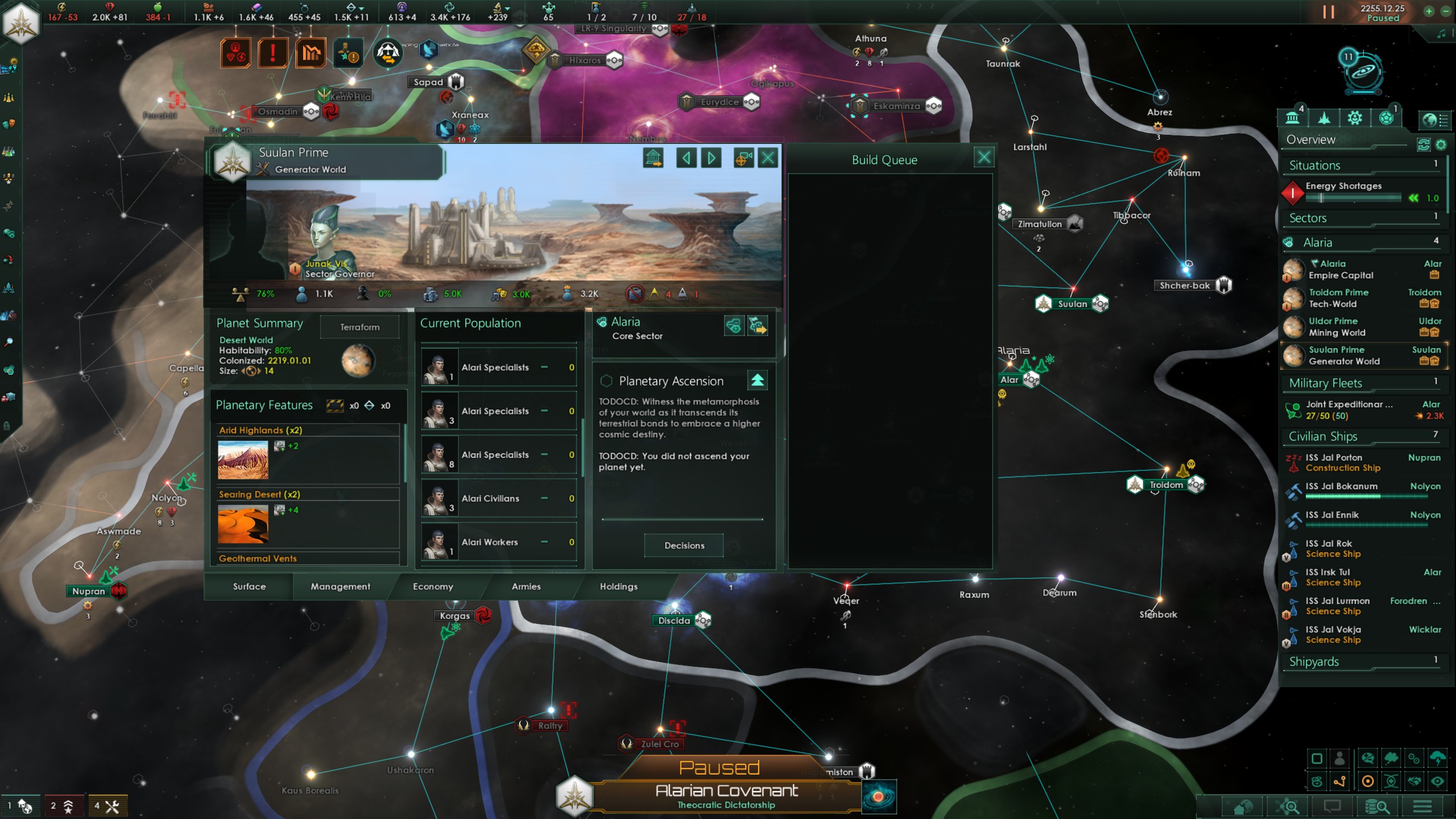So, I played versions 3.99.1, 3.99.3 and 3.99.5. And I got the following impression:
1) In the concept of zones, I agree that buildings should not add fixed jobs, but should only strengthen or change the priority of zones.
2) In the starting worlds, we, the players, are faced with the fact that we do not have enough jobs for each resource. Therefore, many blame the zones for this, which do not allow the construction of familiar buildings. And these people are demanding that fixed jobs and the ability to put buildings in any zone be returned. As a result, you, the development team, are adding mixed zones.
3) Reducing the number of zones and the ability to put buildings in any zone kills the concept of zones, bringing the zones closer to the old system.
4) But we need more zones on one planet (government + 6). Then the player will have the opportunity to add all the activities on one planet. At the same time, it will be enough for players to use highly specialized zones (alloys, consumer goods, unity, research, trade value, amenities/military), there will be no need for mixed ones. When players colonize many planets and begin to specialize them, they will be able to put 6 identical zones.
5) In addition to paragraph 4, it is possible to allow buildings to be built in related zones that will convert a small part, for example, bureaucrats to scientists. However, it will probably be superfluous.
6) A planetary shield should be able to be built both in a military zone and in a government zone, and possibly in some more. It can also be with other special buildings.
I like the zones, but I feel like there aren't enough of them.
1) In the concept of zones, I agree that buildings should not add fixed jobs, but should only strengthen or change the priority of zones.
2) In the starting worlds, we, the players, are faced with the fact that we do not have enough jobs for each resource. Therefore, many blame the zones for this, which do not allow the construction of familiar buildings. And these people are demanding that fixed jobs and the ability to put buildings in any zone be returned. As a result, you, the development team, are adding mixed zones.
3) Reducing the number of zones and the ability to put buildings in any zone kills the concept of zones, bringing the zones closer to the old system.
4) But we need more zones on one planet (government + 6). Then the player will have the opportunity to add all the activities on one planet. At the same time, it will be enough for players to use highly specialized zones (alloys, consumer goods, unity, research, trade value, amenities/military), there will be no need for mixed ones. When players colonize many planets and begin to specialize them, they will be able to put 6 identical zones.
5) In addition to paragraph 4, it is possible to allow buildings to be built in related zones that will convert a small part, for example, bureaucrats to scientists. However, it will probably be superfluous.
6) A planetary shield should be able to be built both in a military zone and in a government zone, and possibly in some more. It can also be with other special buildings.
I like the zones, but I feel like there aren't enough of them.
- 9
- 3
- 1





